It was built on a stretched 427 Cobra chassis, powered by a big-block Ford V8, and styled by a talented Torinese designer. It competed with the elite GT cars of the late 1960s, and yet the AC 428 (aka the AC Frua) is more footnote than famous in car history. One of these obscure Anglo-Italo-American hybrids sold online in America last month for $417,000 (£340,000), and that’s a ton of money. In fact, we’ve never seen one sell for more. Compared to similar all-Italian cars or a later AC Cobra with a similar engine, however, it almost looks like a bargain.
The 1960s were a golden age for high-performance long-distance touring cars, including hybrids like Chrysler-powered Bristols and Chevrolet-powered Iso Grifos, and thoroughbreds like the Aston Martin DB5/DB6 and Ferrari 330. AC Cars of Thames Ditton had the lovely Ace/Aceca sports cars and enjoyed providing the basis for Carroll Shelby’s Cobra for several glorious years, but it was hard for the company to ignore the lucrative opportunity that the gran turismo market offered. The 428 was AC’s foray into that crowded segment.

In a lot of ways, the 428 made a lot of sense. The tubular chassis, hand-fabricated on the jigs originally used for the Cobras, was a race-proven unit that AC stretched by 6 inches for added space and stability. Independent suspension on all four corners helped keep the car planted. The engine was a 7-litre V8 borrowed from the Ford Galaxie and rated at 345bhp and 462lb ft of torque. Because Italian styling is almost never a bad idea, AC enlisted the services of Pietro Frua, who had penned the Renault Caravelle, the Swiss Monteverdi, and the Maserati Mistral. Frua did recycle a lot of his ideas from the Maserati, to the point that a 428 and a Mistral are difficult to tell apart, but you know what they say about imitation and flattery…. Both vehicles are gorgeous.
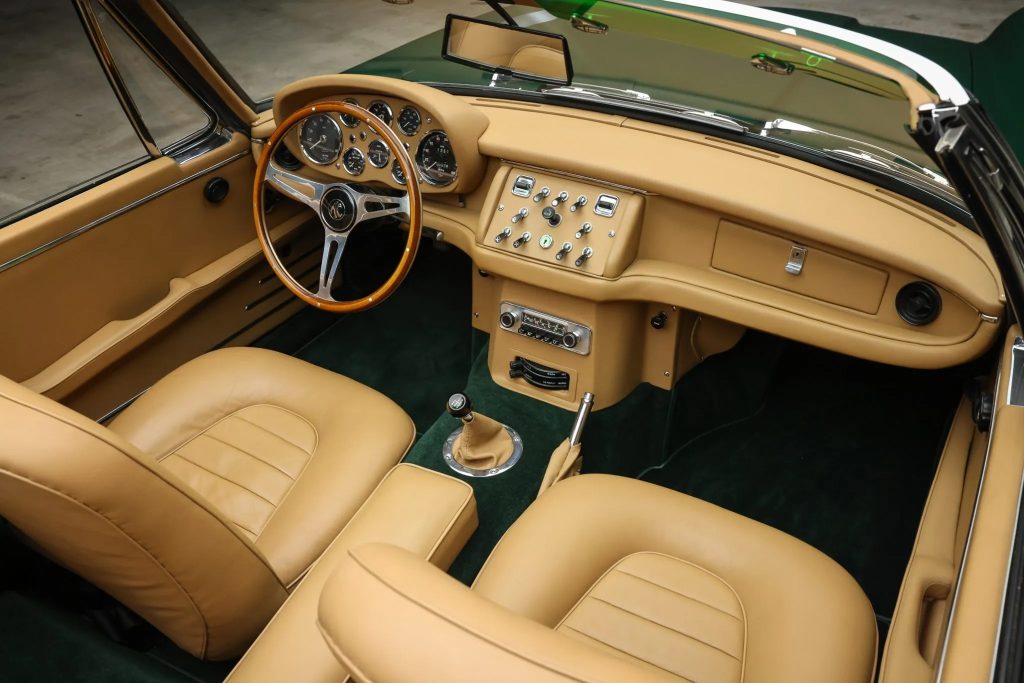
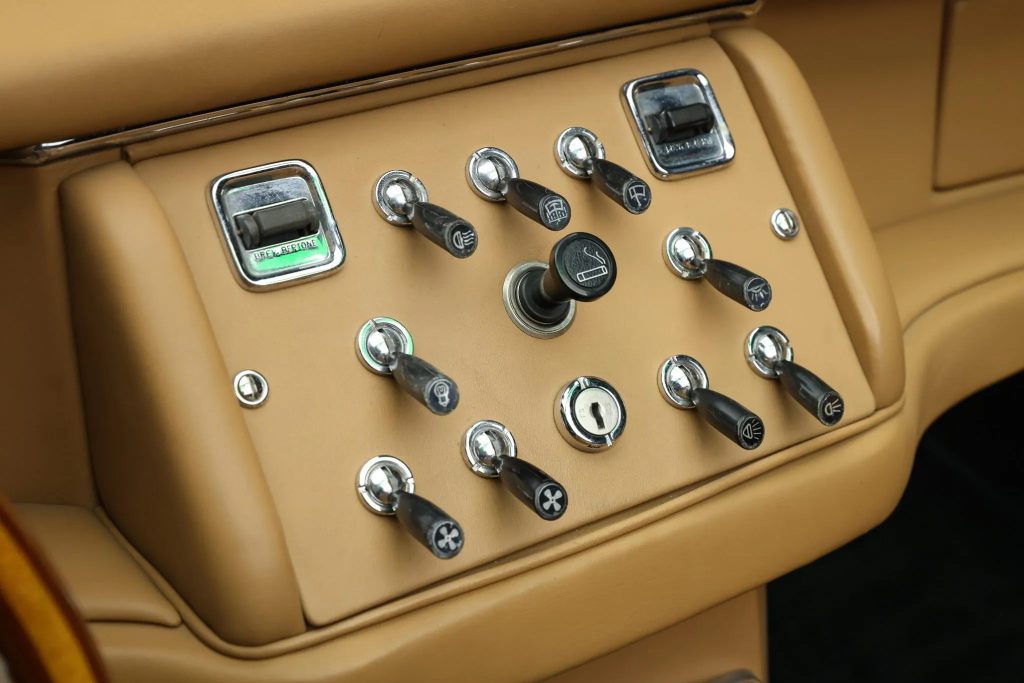
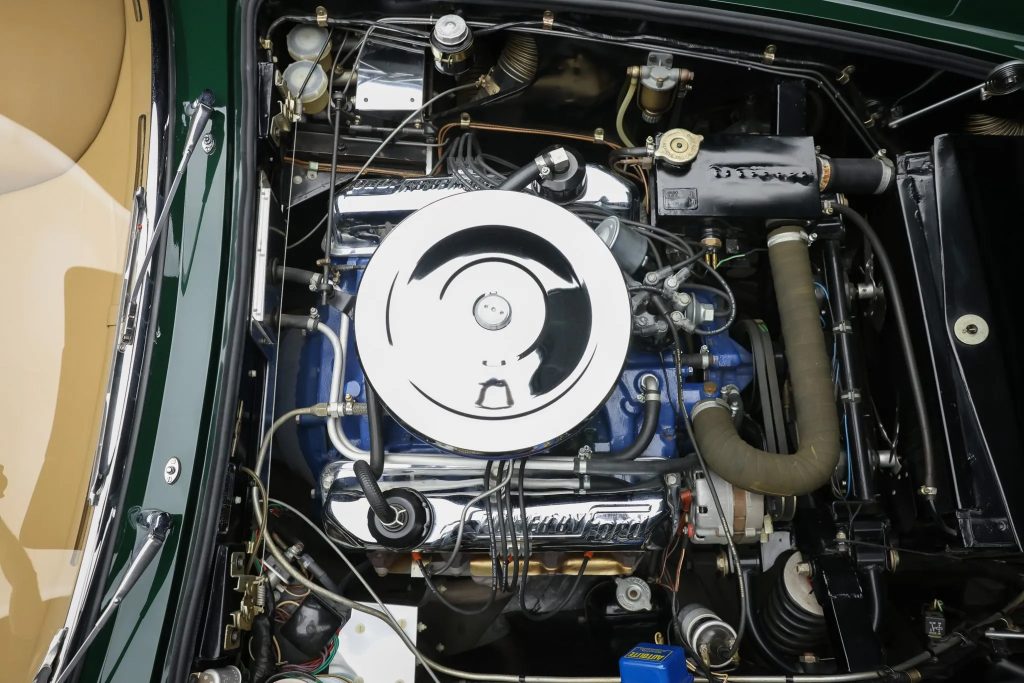
The 428, then, offered the looks and performance of a Ferrari, the running costs of a Yankee commuter car, the interior trimmings of an English luxury GT, and a legendary race car chassis. Other than complaints of heat seeping into the footwell from the monster Ford engine, the press gushed. Motor said the 428 “surges away into the middle distance with the silken surge of seemingly infinite torque,” and Autocar remarked that it “responds to the throttle like no other car we know and for normal sedate motoring it takes only a touch on the throttle to make the speedometer swing upwards at an unbelievable rate.” But despite all that, it wasn’t exactly a winning recipe. Labor unrest in Italy and challenges securing engines from Ford meant that AC’s two main suppliers were unreliable.
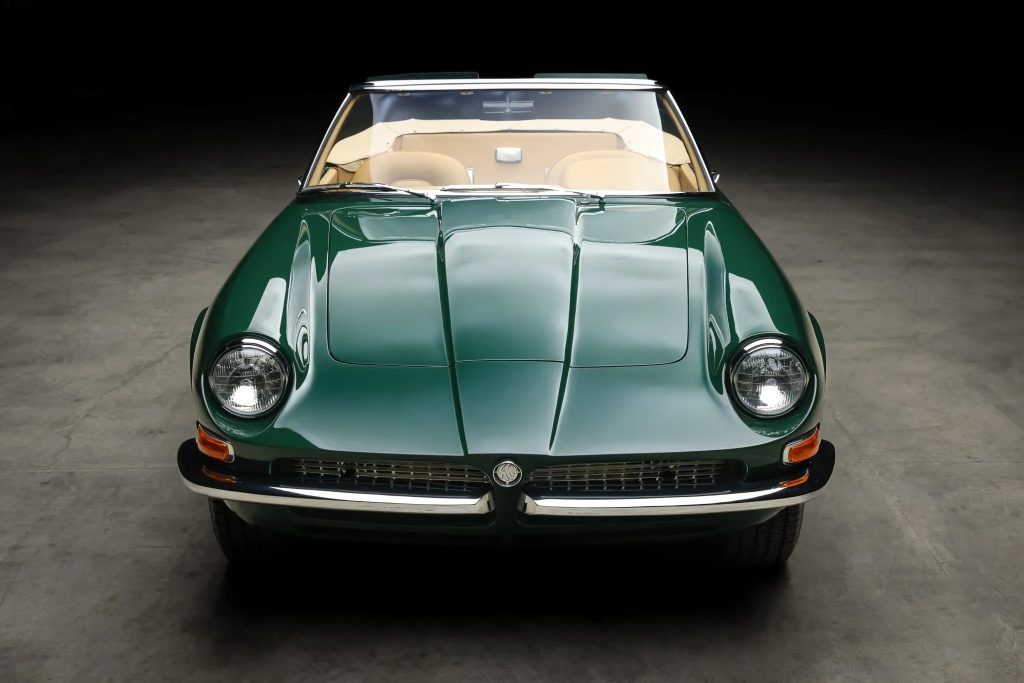
And even when things were going right, the 428 was expensive to build – a common problem with cars bodied in Italy but assembled somewhere else. After finishing the 428 rolling chassis, AC sent them to Frua in Turin. Frua welded on either Spider or Coupé bodywork and then shipped them back to England for AC to trim, paint, and install the drivetrain. These logistical costs resulted in the 428 being comfortably more expensive than an Aston Martin DB6 and roughly twice as much as an E-Type Jaguar. The energy crisis in 1973 also hit Britain fairly hard, and a 16mpg high-dollar performance car was a tough sell. In the end, only 81 examples of the AC 428 left Thames Ditton.
Most were coupés and most came in right-hand drive. A decent number of 428s also came with a three-speed automatic rather than the standard four-speed manual. Which makes this example – a left-hand-drive stick shift Spider with Halibrand wheels – quite special. One of about 30 Spiders, it spent time in the UK and Switzerland before being restored in the US during the 1990s and winning its class at the Pebble Beach Concours d’Elegance in 1995. It has the nicks and blemishes inevitable on a 30-year-old restoration, but still looks lovely and to our eyes like a car in #2- (just shy of “excellent”) condition.
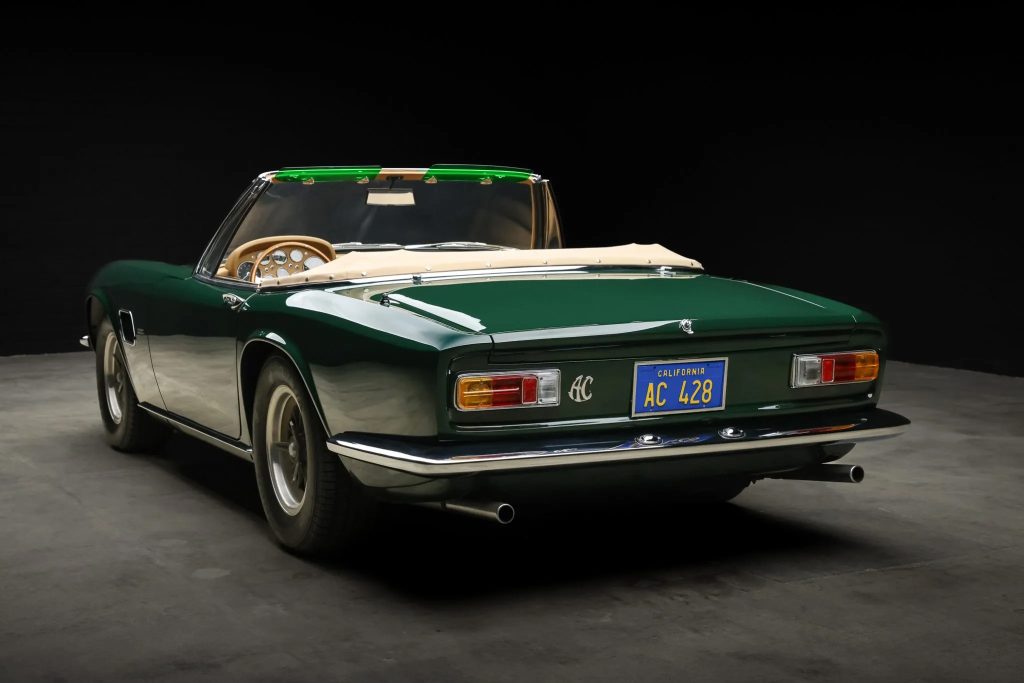
Yet it sold for £75,000 grand over its condition #1 (concours, or best-in-the-world) value in the Hagerty Price Guide. Credit the desirable configuration, and the fact that good examples of a car this rare don’t exactly pop up every week. Almost all of the 428s to hit the market over the past couple of years have been coupes, automatics, in scruffy condition, or some combination of the above. The closest real comparable sale was a $302,000 (£246,000) Spider that sold at the Monterey auctions in 2021, but even that was an automatic.
Even at this market-leading result, though, it’s a lot of car for the money. Let’s just consider the condition #2 prices of the cars this green-over-tan beauty competed against in 1970. An Aston DB6 Volante is worth £770K. The visually similar Maserati Mistral, which has two fewer cylinders and 90 fewer horsepower, is worth £600,000. As for the Cobra, with which the 428 shares so much of its DNA, a 428-powered Cobra is an £897K car. Sometimes, the footnotes of automotive history can be the best buys.










